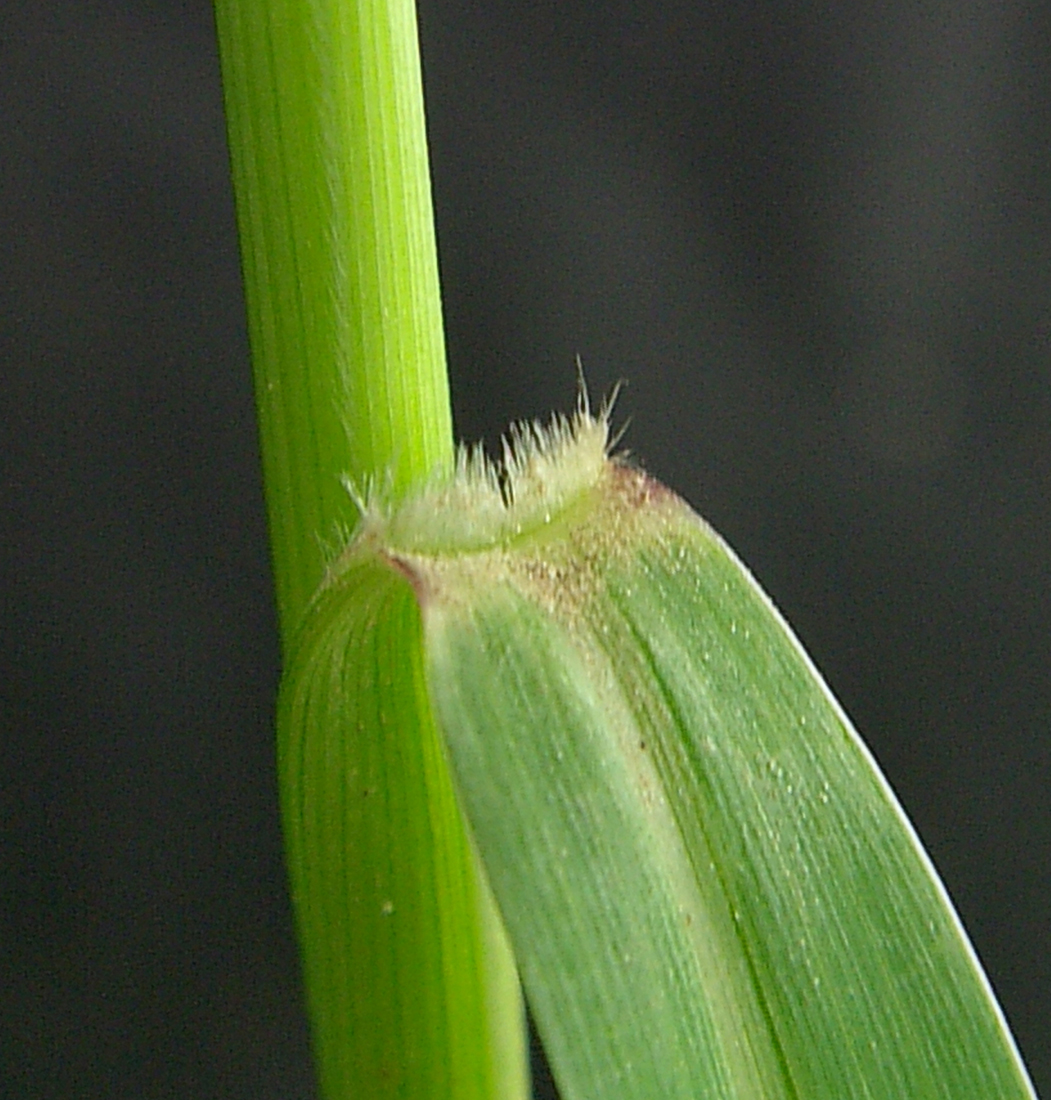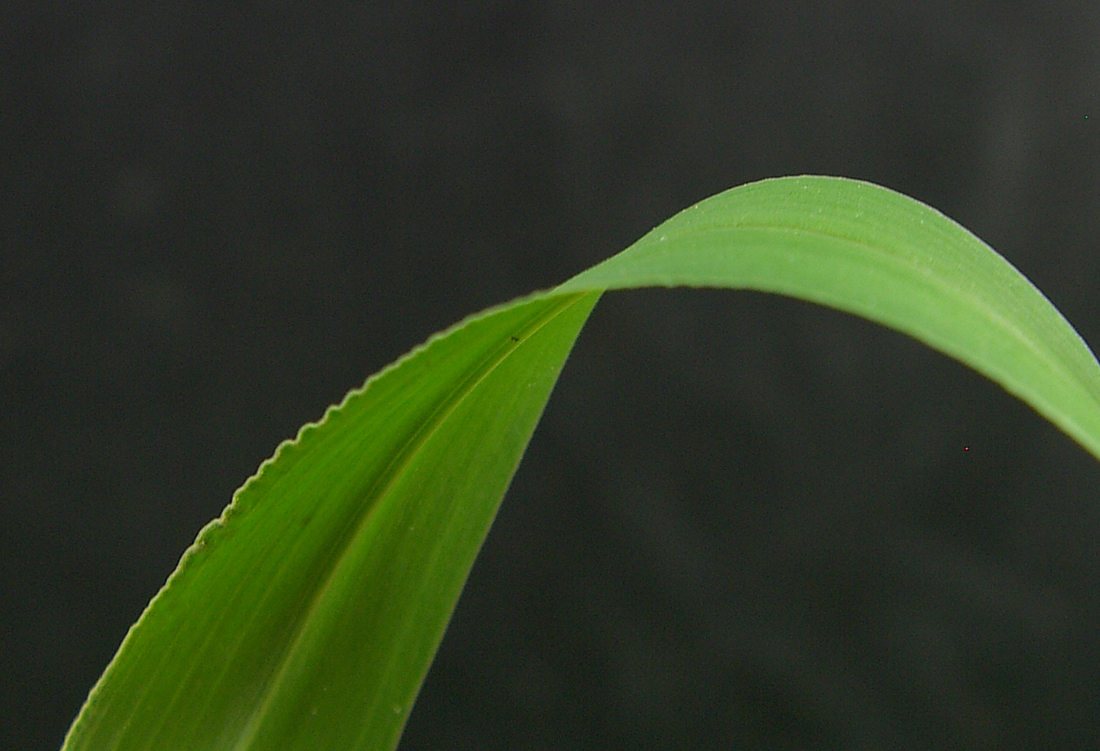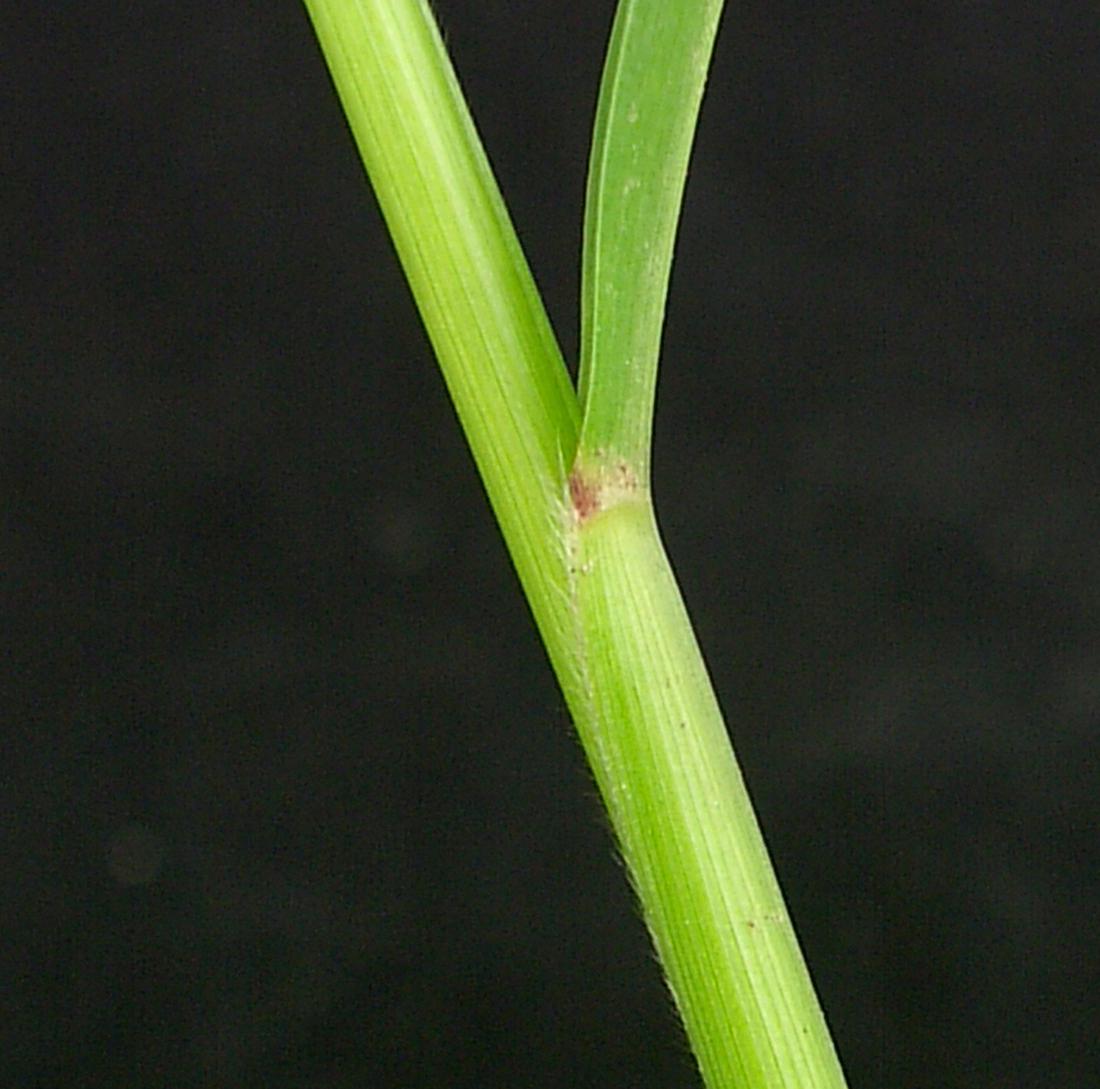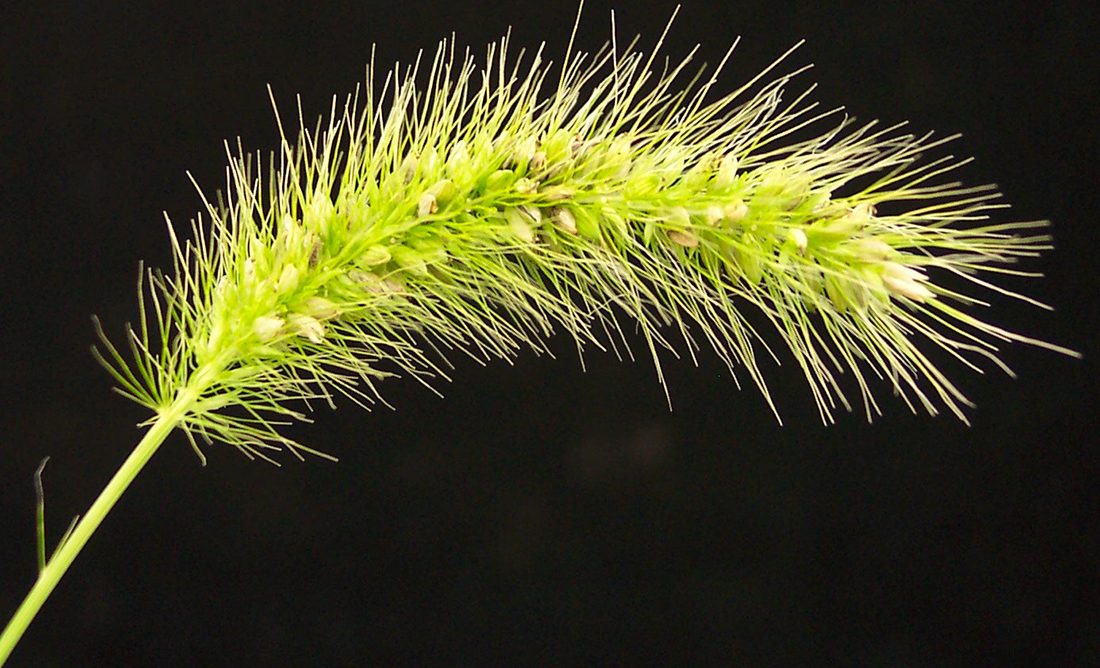Green Foxtail
- Grass (Poaceae family)
- Setaria viridis (L.) P. Beauv.
- EPPO code:
- SETVI
- Other names:
- Bottle brush, bottle grass, bristle grass, millet, pigeon grass, wild millet
Species information
- Lifecycle:
- Annual.
- Propagation:
- Reproduces by seed.
- Emergence:
- Typically, green foxtail is one of the first annual grass species to emerge in the spring, but it usually emerges after broadleaf weeds, like lamb’s quarters and pigweed.
- Habitat:
- Green foxtails is probably the most common of the foxtail species. It is mainly found in cultivated fields throughout Ontario.
- Competitiveness:
- Agriculture and Agri-Food Canada research has shown that green foxtail densities of 20,000 plants/ac can result in up to a 7% yield loss in corn and soybeans.
- Resistance:
- A number of populations are resistant to Group 2 (for example, imazethapyr) herbicides in Ontario.
Identification clues
- Auricles:
- None.
- Ligule:
- Hairy.
- Leaf blade:
- Both the upper and lower surface of the leaf blade is smooth and hairless.
- Leaf sheath:
- The margins of the sheath are hairy.
- Stem:
- Round.
- Seed heads:
- Green foxtail’s seed head is typically 4–10 cm long, bristly and spiked. About half the size of giant foxtail’s seed head, green foxtail also produces smaller seeds than those of yellow foxtail.
- Roots:
- Fibrous.
Often mistaken for
I know it's not Fall panicum because green foxtail has a hairy leaf margin and fall panicum does not.
I know it's not Giant foxtail because the upper and lower leaf blade surface of green foxtail is hairless.





Updated: January 13, 2023
Published: January 13, 2023